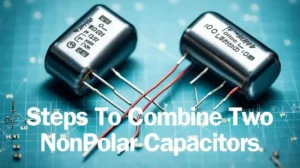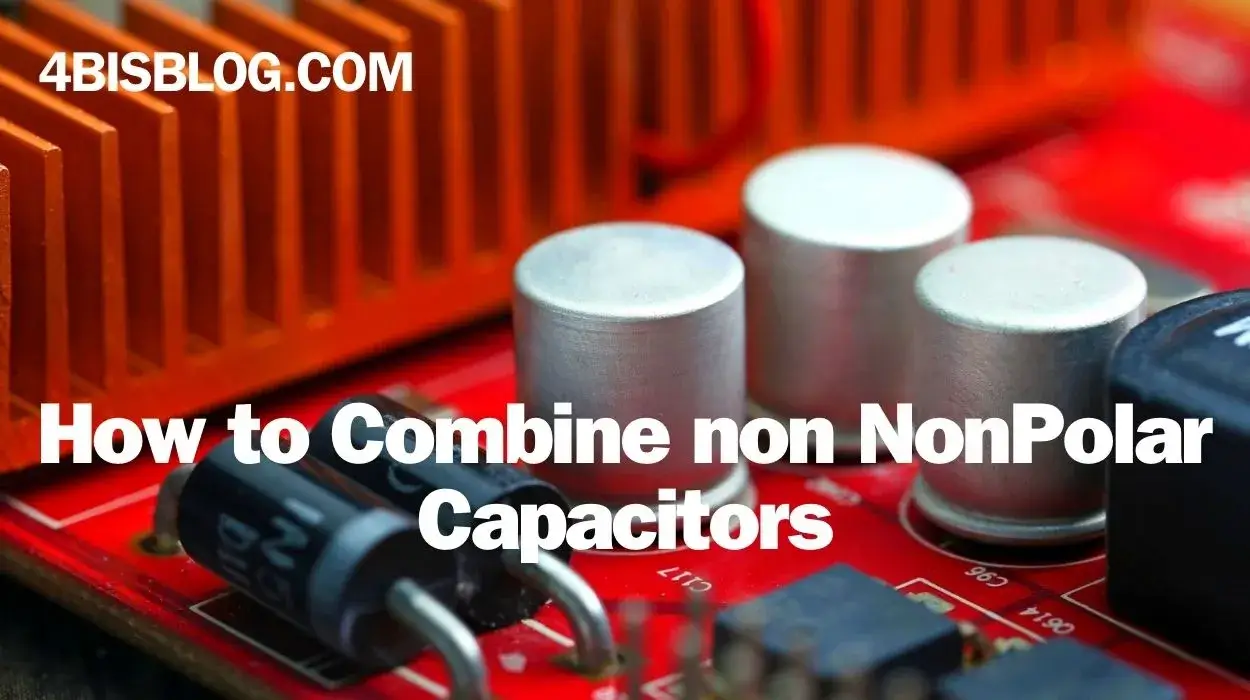Learn the art of optimizing electronic circuits by mastering the techniques on How to Combine non NonPolar Capacitors for enhanced performance and efficiency.
Combining non-polar capacitors can be a puzzling endeavor, yet it holds the potential for unlocking enhanced performance in electronic circuits. These capacitors, known for their distinct characteristics, present a unique challenge when integrated.
Understanding the principles behind their fusion is crucial for optimizing their collective efficiency. In this guide, we’ll delve into the intricacies of merging non-polar capacitors, exploring techniques and considerations to harness their combined power effectively.
Let’s embark on this journey of capacitor amalgamation!
A NonPolar Capacitor: What Is It?
Non-polar capacitors are electrical parts with energy storage and release capabilities. Unlike polar capacitors, which have fixed polarity, nonpolar capacitors are bi-directional, allowing current to flow in both directions.
They’re commonly used in circuits where the voltage may reverse, ensuring durability and reliability. These capacitors come in several varieties, such as film, tantalum, and ceramic capacitors. Each kind has unique characteristics that suit certain uses.
To effectively use non-polar capacitors in electrical circuits, one must have a solid understanding of them.
Types Of NonPolar Capacitors
Non-polar capacitors come in various types, each tailored for specific electronic applications:
1. Ceramic Capacitors
Because of their low cost and great durability, ceramic capacitors are exceedingly flexible and commonly employed. They come in a range of dielectrics with different amounts of capacitance and voltage.
Numerous timing, decoupling, and filtering circuits in electrical devices make use of these capacitors.
2. Tantalum Capacitor
Tantalum capacitors‘ great capacitance density and remarkable stability make them perfect for demanding applications with little space. Their high reliability and low leakage current make them popular in medical equipment, portable electronics, and telecommunications.
Understanding the nuances of these distinct non-polar capacitor types is crucial for selecting the most suitable component for specific electronic circuit requirements.
3. Film Capacitor
Film capacitors, renowned for their stability and reliability, utilize a thin plastic film as the dielectric.
These capacitors excel in high-frequency applications, offering low losses and excellent performance across a wide range of temperatures. Their durability and versatility make them a popular choice in various electronic circuits.
Types Of Combinations Of Non-Polar Capacitors
When integrating non-polar capacitors, various combinations offer distinct advantages in electronic circuitry:
1. Parallel Combination
In a parallel combination, non-polar capacitors are connected across each other’s terminals. This setup increases the overall capacitance, ideal for applications requiring higher capacitance values or improved filtering capabilities.
2. Series Combination Of Non-Polar Capacitors
Series combinations involve linking non-polar capacitors end-to-end. This configuration enhances the voltage rating while maintaining the same capacitance, suitable for applications requiring higher voltage handling capacity.
3. Mixed Combination
Mixed combinations involve a blend of both parallel and series connections. This hybrid approach allows tailoring capacitance and voltage ratings, offering flexibility in meeting diverse circuit requirements.
Understanding these diverse combinations of non-polar capacitors empowers engineers and hobbyists to optimize circuit performance by leveraging the unique benefits of each configuration.
Choosing the right combination is pivotal in achieving desired functionality and efficiency in electronic designs.
Material Required on How To Combine Non NonPolar Capacitors
Creating a non-polar capacitor combination necessitates specific materials:
1. Non-Polar Capacitors
Select capacitors of desired capacitance and voltage ratings, considering the circuit requirements.
2. Connecting Wires
High-quality wires for interconnecting capacitors in the chosen configuration (parallel, series, or mixed).
3. Soldering Equipment
Soldering iron and solder to securely join capacitor terminals.
4. Insulating Material
Heat shrink tubing or insulating tape can shield connections and stop short circuits.
Gathering these materials ensures a proper setup for combining non-polar capacitors effectively in electronic circuits.


Steps To Combine Two NonPolar Capacitors
Combining two non-polar capacitors involves a systematic approach:
1. Identify Capacitors
Choose capacitors with matching capacitance values and voltage ratings.
2. Select Combination Type
Determine whether to use parallel, series, or a mixed combination based on circuit requirements.
3. Connect Terminals
Connect the capacitors as per the chosen configuration, ensuring correct polarity alignment for series connections.
4. Secure Connections
Solder the connections and insulate them using appropriate materials to prevent short circuits.
5. Test and Verify
Verify the combined capacitance and voltage ratings using a multimeter or relevant testing equipment.
Following these steps methodically facilitates the successful combination of two non-polar capacitors, optimizing their performance in electronic circuits.
Conclusion
In conclusion, the world of non-polar capacitors unveils a realm of possibilities in electronic circuit design.
Understanding their types, combinations, and the process of amalgamation allows engineers and hobbyists to craft circuits with enhanced performance and efficiency. From ceramic to tantalum capacitors, the diversity of options caters to various application needs, offering reliability and functionality.
By employing the right materials and following precise steps, harnessing the colledctive power of non-polar capacitors becomes a feasible and rewarding endeavor, elevating the potential of electronic systems.
Exploring these components opens avenues for innovation and creativity in the realm of electronics.
Read Also:
https://www.4bisblog.com/a-fatal-error-occurred-when-running-fusee/
https://www.4bisblog.com/how-to-add-dashboards-to-unleashed-x/

